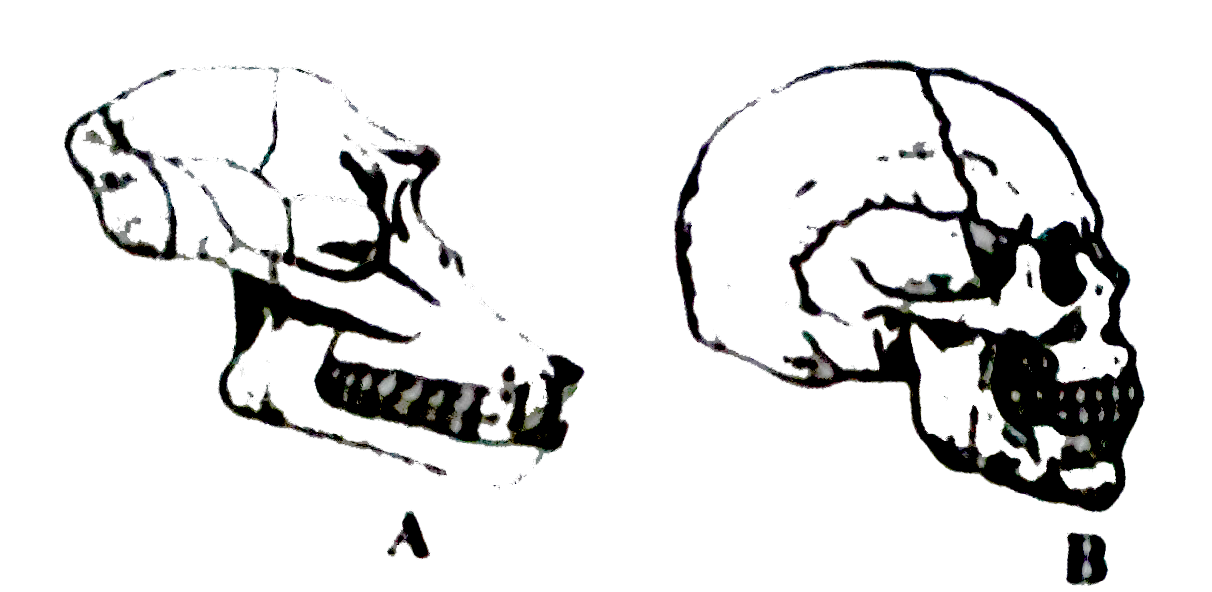The skull of frog is
Non-condylic
Diconidylic
Monocondylic
None of these
The correct Answer is:B
Step-by-Step Solution:
1. Understanding the Structure of the Frog's Skull:
- The skull of the frog is an important structure that connects to the body. It is essential to understand how it articulates with the vertebral column.
2. Articulation with the Body:
- The frog's skull is attached to its body via two structures known as articulatory condyles. These condyles allow the skull to pivot and move, which is crucial for the frog's mobility.
3. Identifying Key Features:
- Beneath the foramen magnum (the large hole at the base of the skull through which the spinal cord passes), there are two occipital condyles. These are rounded knobs that help in the articulation of the skull with the vertebral column.
4. Defining the Foramen Magnum:
- The foramen magnum is a significant anatomical feature as it is the opening in the skull that connects the brain to the spinal cord.
5. Classification of the Skull:
- The skull of the frog is classified as dicondylic, meaning it has two condyles (the occipital condyles) that articulate with the vertebrae. This is in contrast to other types of skulls, such as monocondylic (one condyle) or non-condylic (no condyles).
6. Evaluating Options:
- Given the options provided:
- Non-condylic: Incorrect, as the frog has two occipital condyles.
- Diacondylic: Correct, as it has two condyles.
- Monocondylic: Incorrect, as it has two condyles.
- None of these: Incorrect, since the correct classification is diacondylic.
7. Conclusion:
- The correct answer to the question "The skull of frog is" is that it is diacondylic.
- The skull of the frog is an important structure that connects to the body. It is essential to understand how it articulates with the vertebral column.
- The frog's skull is attached to its body via two structures known as articulatory condyles. These condyles allow the skull to pivot and move, which is crucial for the frog's mobility.
- Beneath the foramen magnum (the large hole at the base of the skull through which the spinal cord passes), there are two occipital condyles. These are rounded knobs that help in the articulation of the skull with the vertebral column.
- The foramen magnum is a significant anatomical feature as it is the opening in the skull that connects the brain to the spinal cord.
- The skull of the frog is classified as dicondylic, meaning it has two condyles (the occipital condyles) that articulate with the vertebrae. This is in contrast to other types of skulls, such as monocondylic (one condyle) or non-condylic (no condyles).
- Given the options provided:
- Non-condylic: Incorrect, as the frog has two occipital condyles.
- Diacondylic: Correct, as it has two condyles.
- Monocondylic: Incorrect, as it has two condyles.
- None of these: Incorrect, since the correct classification is diacondylic.
- The correct answer to the question "The skull of frog is" is that it is diacondylic.
Topper's Solved these Questions
- STRUCTURAL ORGANISATION IN ANIMALSBOOK - CENGAGE BIOLOGY ENGLISHCHAPTER - STRUCTURAL ORGANISATION IN ANIMALSEXERCISE - ARCHIVES
27 Videos
- RESPIRATION IN PLANTS BOOK - CENGAGE BIOLOGY ENGLISHCHAPTER - RESPIRATION IN PLANTS EXERCISE - ARCHIVES
12 Videos
- THE LIVING WORLDBOOK - CENGAGE BIOLOGY ENGLISHCHAPTER - THE LIVING WORLDEXERCISE - ARCHIVES
24 Videos
Similar Questions
Knowledge Check
The diagram given here shows the skulls of two different mammals.

Which of the following accurately describes the differences between these skulls?ASkullA has more teeth than skull B.BSkull A has more brain capacity than skull B.CSkull A is of a human and skull B is of an ape.DSkull A is of a ape and skull B is of a human.
Bone relates with skull of rabbit is −
View SolutionThe given illustration shows the skull of two different mammals. Which of the following accurately describes the differences between these skulls ?

View SolutionThe skull of human is composed of two sets of bones which are.
View SolutionHow many occipital condyles are present in the skull of reptiles?
View SolutionThe illustration the skull of two different mammals. Use the illustration to answer the question that follows :

Which of the following accurately describes the differences between these skulls ?
View SolutionA frog has
View SolutionA frog has
View Solution
